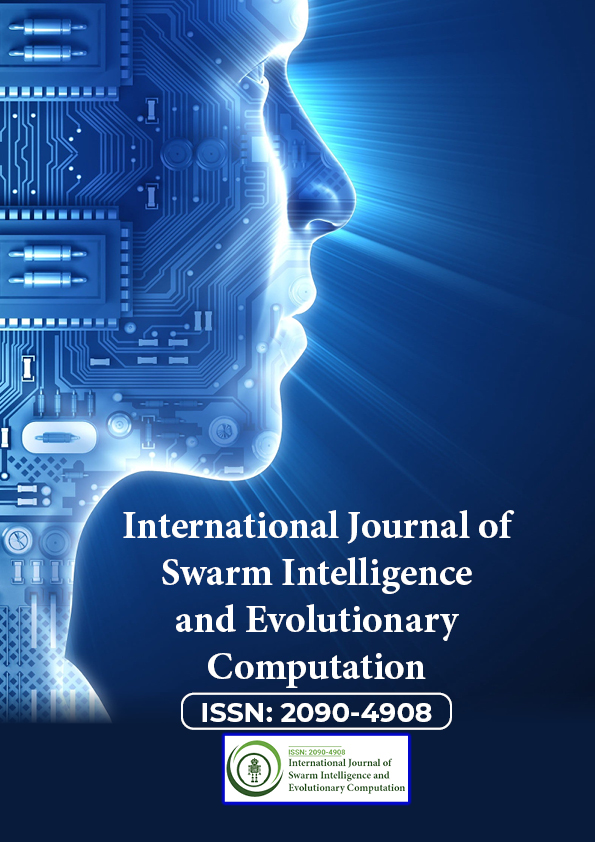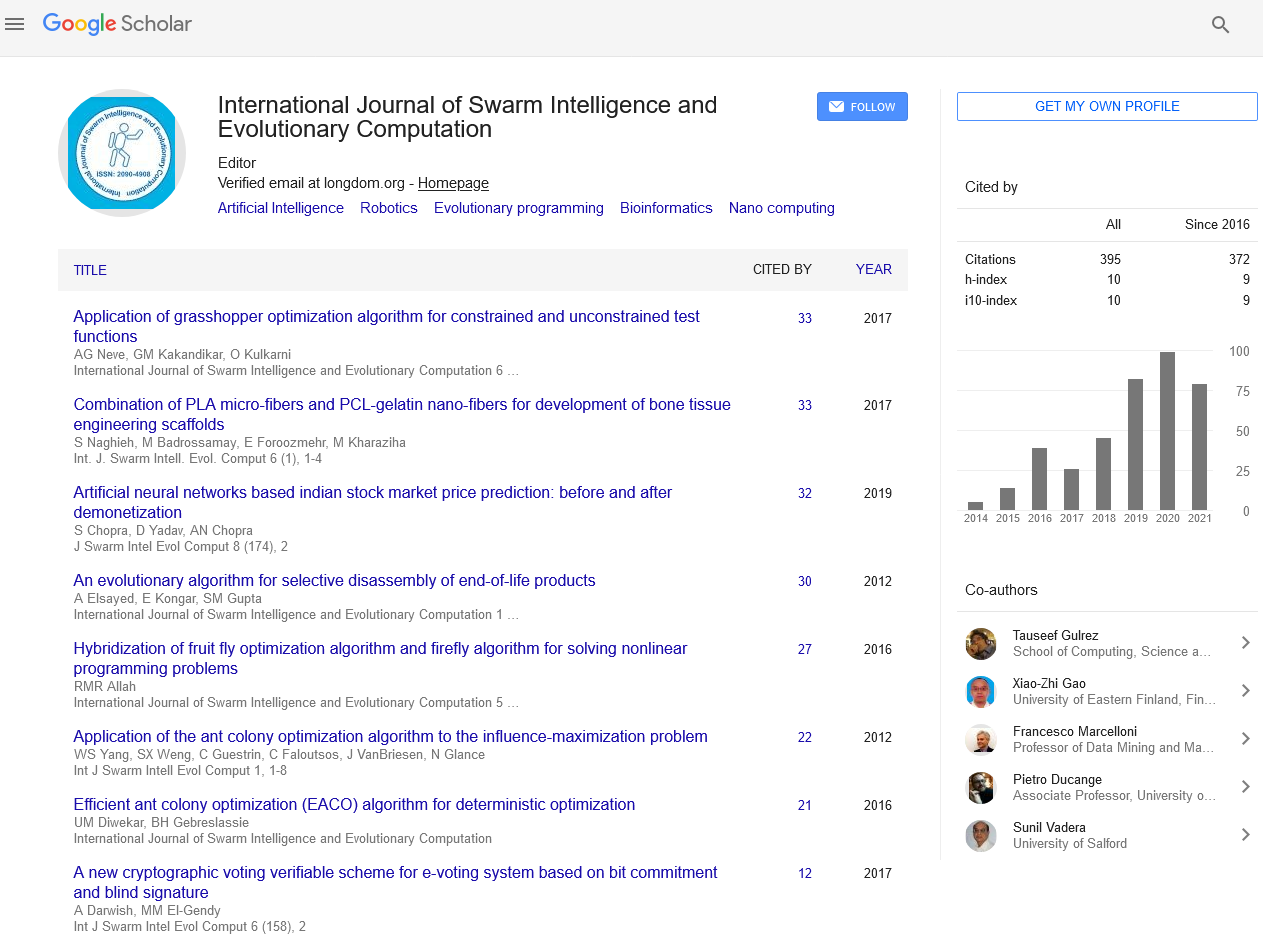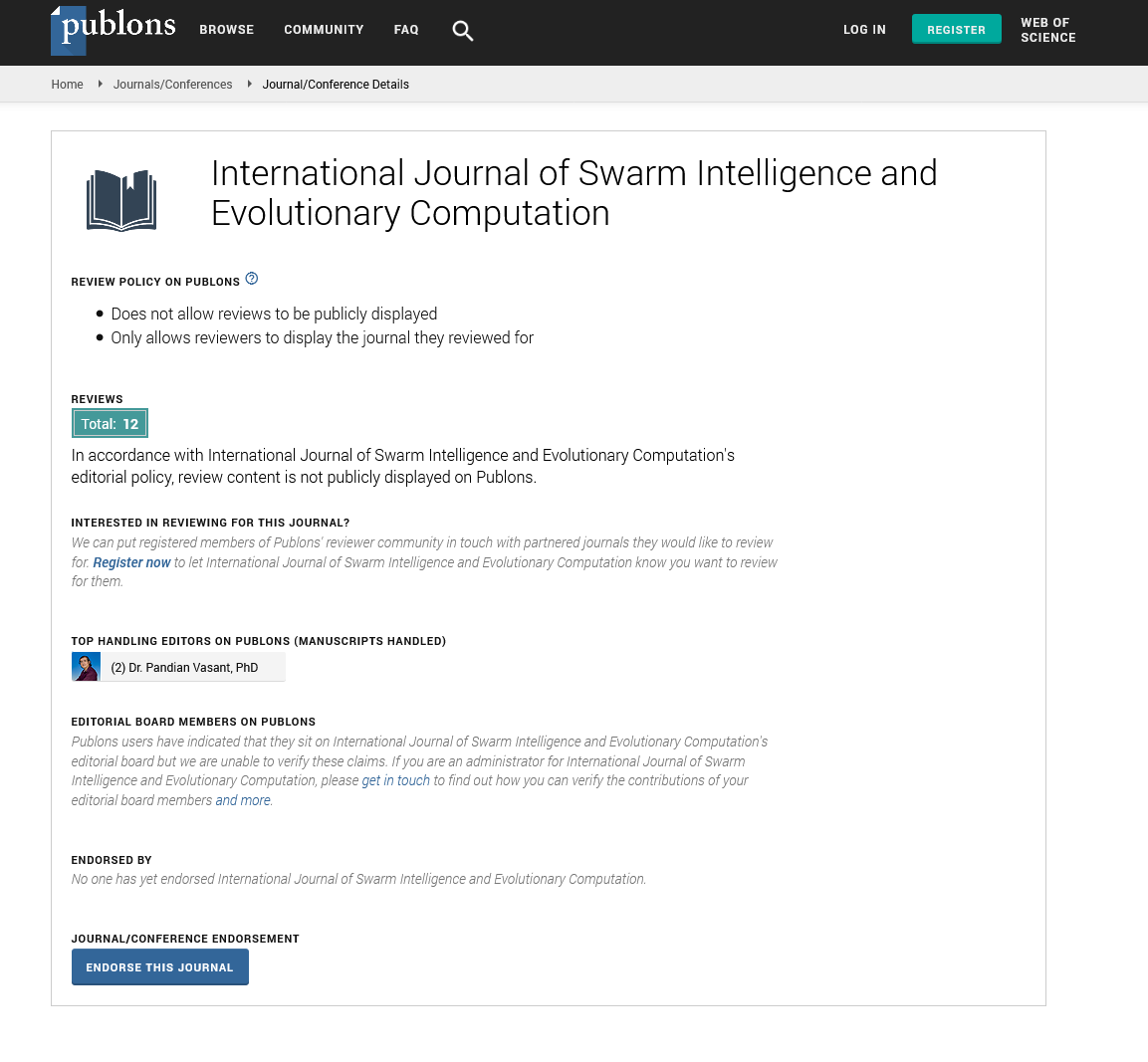Indexed In
- Genamics JournalSeek
- RefSeek
- Hamdard University
- EBSCO A-Z
- OCLC- WorldCat
- Publons
- Euro Pub
- Google Scholar
Useful Links
Share This Page
Journal Flyer

Open Access Journals
- Agri and Aquaculture
- Biochemistry
- Bioinformatics & Systems Biology
- Business & Management
- Chemistry
- Clinical Sciences
- Engineering
- Food & Nutrition
- General Science
- Genetics & Molecular Biology
- Immunology & Microbiology
- Medical Sciences
- Neuroscience & Psychology
- Nursing & Health Care
- Pharmaceutical Sciences
Commentary - (2022) Volume 11, Issue 2
Role of Particle Swarm Optimization in Soft Computing
Keshav Ayyer*Received: 07-Feb-2022, Manuscript No. SIEC-22-16017; Editor assigned: 09-Feb-2022, Pre QC No. SIEC-22-16017(PQ); Reviewed: 23-Feb-2022, QC No. SIEC-22-16017; Revised: 28-Feb-2022, Manuscript No. SIEC-22-16017(R); Published: 07-Mar-2022, DOI: 10.35248/2090-4908.22.11.240
Description
In computational science, Particle Swarm Optimization (PSO) is a computational method that optimizes a problem by repeatedly trying to improve candidate solutions for a given quality criterion. Here, we prepare a population of solution candidates called particles, and solve the problem by moving these particles in the search space according to a simple mathematical formula via the position and velocity of the particles. The movement of each particle is influenced by its local best-known position, but is also guided to the best-known position in the search space. These positions will be updated when other particles find a better position. This should move the herd to the best solution. Originally it is derived from Kennedy and Everhart that particle swarm optimization was initially intended to simulate social behavior as a stylized representation of the movement of organisms in a flock of birds or a flock of fish. The algorithm has been simplified and observed to perform optimizations. The Kennedy and Everhart books explain many philosophical aspects of particle swarm optimization and swarm intelligence.
Particle swarm optimization is metaheuristic because it makes few or no assumptions about the problem being optimized and can search for a very large space in the candidate solution. Also, particle swarm optimization does not use the gradient of the problem to be optimized, does not able to differentiate the optimization problem as required by traditional optimization methods such as gradient descent and quasi-Newton. However, metaheuristics like particle swarm optimization do not guarantee that you will find the best solution.
Algorithm
A basic variant of the particle swarm optimization algorithm works on a population (called a group) of candidate solutions (called particles). These particles move within the search space according to some simple formulas. The movement of the particles is guided by the best known position in the search space and the best known position of the entire herd. When improved locations are discovered, they guide the movement of the herd. It is hoped that this process will be repeated and a satisfactory solution will eventually be found, but there is no guarantee.
Parameter selection
The choice of particle swarm optimization parameters can have a significant impact on optimization performance. Therefore, choosing a particle swarm optimization parameter that works well has been the subject of much research. Inertial weight must be less than 1 to prevent divergence. The other two parameters can be derived or freely selected thanks to the contraction approach, but the analysis suggests a convergent domain that constrains them. Typical values are at particle swarm optimization parameters can be adjusted using another overlay optimizer, a concept called meta-optimization, or during optimization.
Neighbour topologies
The topology defines a subset of particles with which each particle can exchange information. The basic version of the algorithm uses the global topology as the swarm communication structure. In this topology, all particles can communicate with all other particles, so the entire swarm shares the same optimal position from one particle. However, this approach uses a variety of topologies to control the flow of information between particles, as swarms can be confined to a minimum. For example, in a local topology, particles share information only with a subset of particles. This subset can be a geometrical one or, more often, a social one, i.e. a set of particles that is not depending on any distance. A commonly used swarm topology is the ring, in which each particle has just two neighbours, but there are many others. The topology is not necessarily static. In fact, since the topology is related to the diversity of communication of the particles, some efforts have been done to create adaptive topologies.
Citation: Ayyer K (2022) Role of Particle Swarm Optimization in Soft Computing. Int J Swarm Evol Comput. 11:240.
Copyright: © 2022 Ayyer K. This is an open-access article distributed under the terms of the Creative Commons Attribution License, which permits unrestricted use, distribution, and reproduction in any medium, provided the original author and source are credited.


